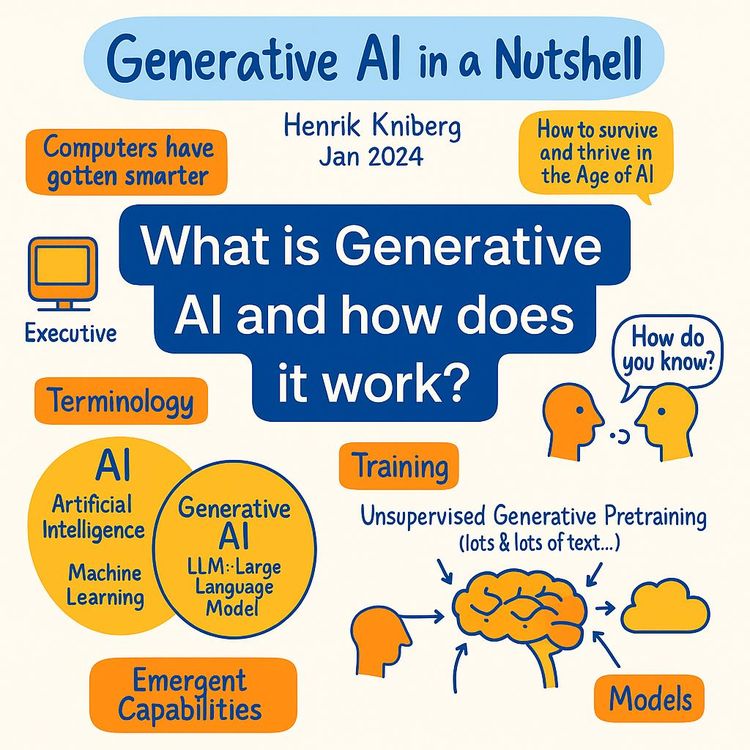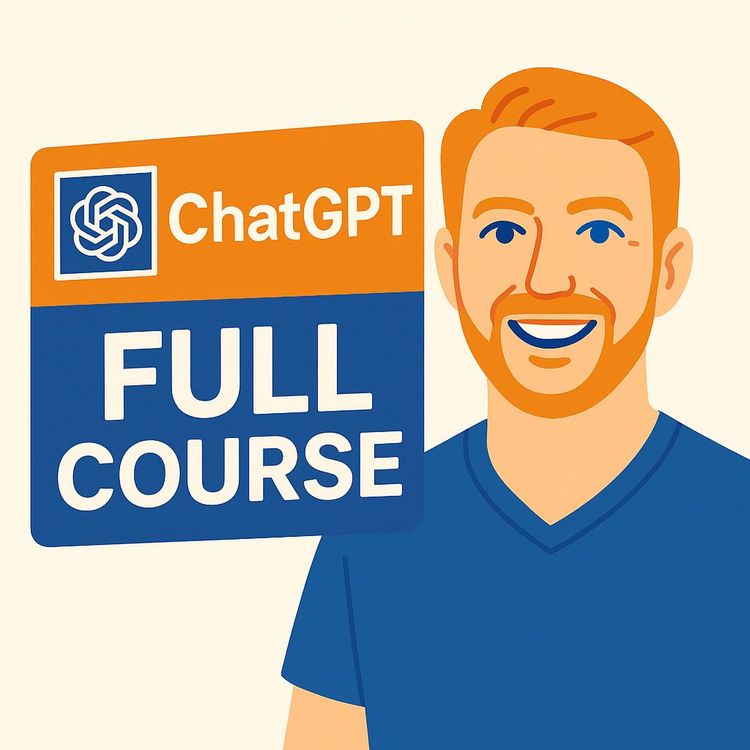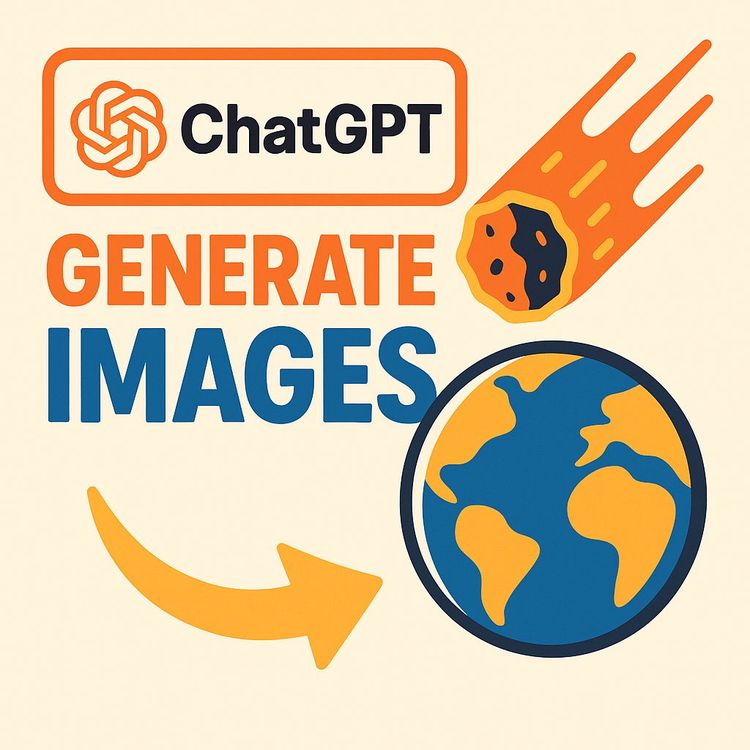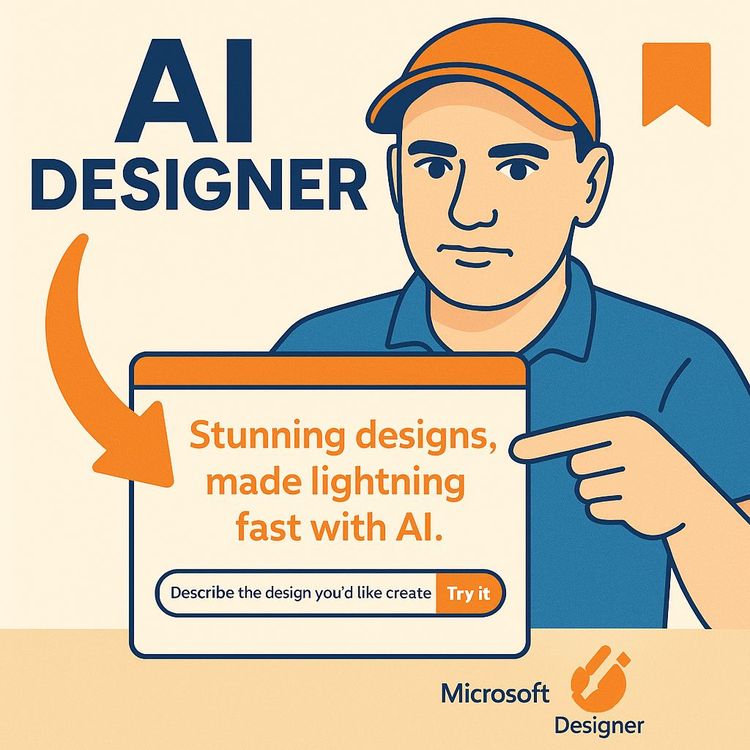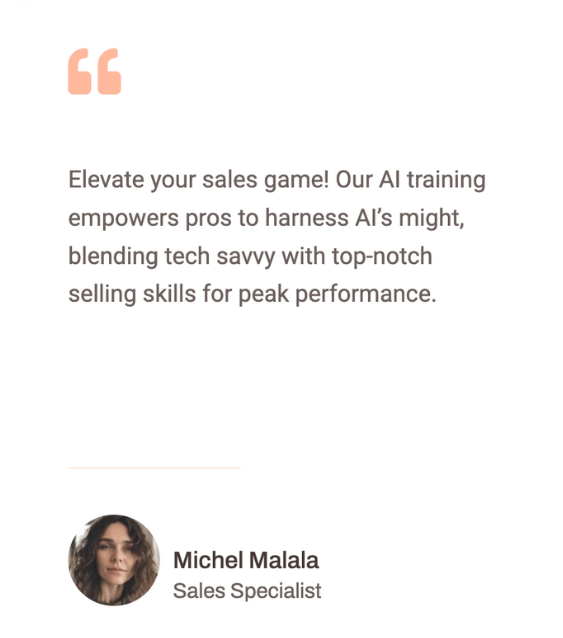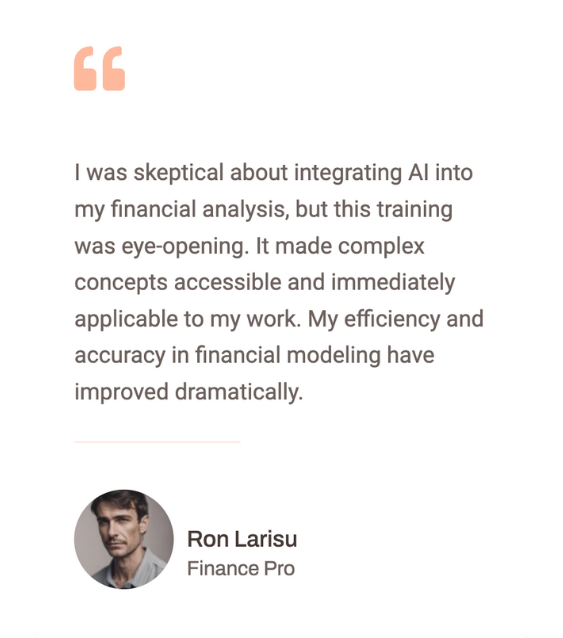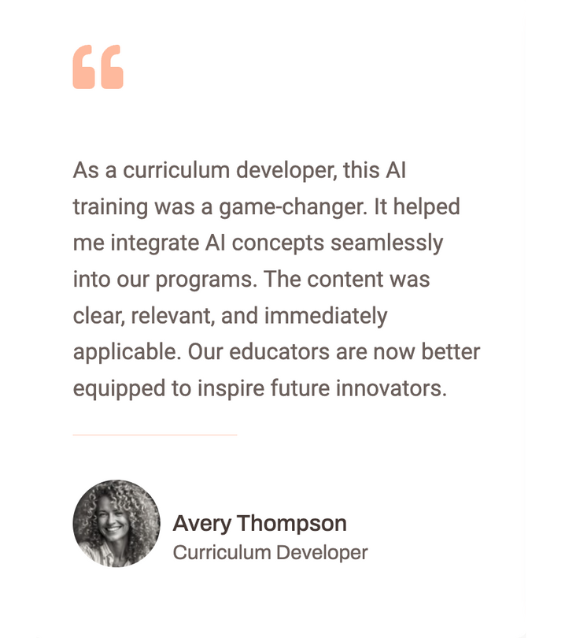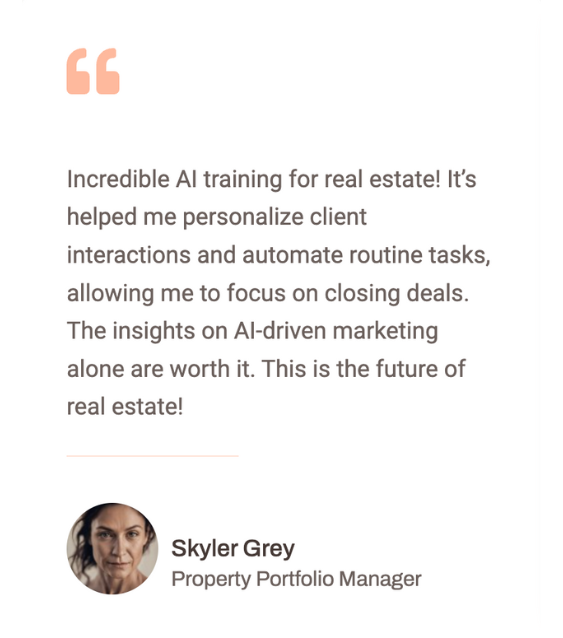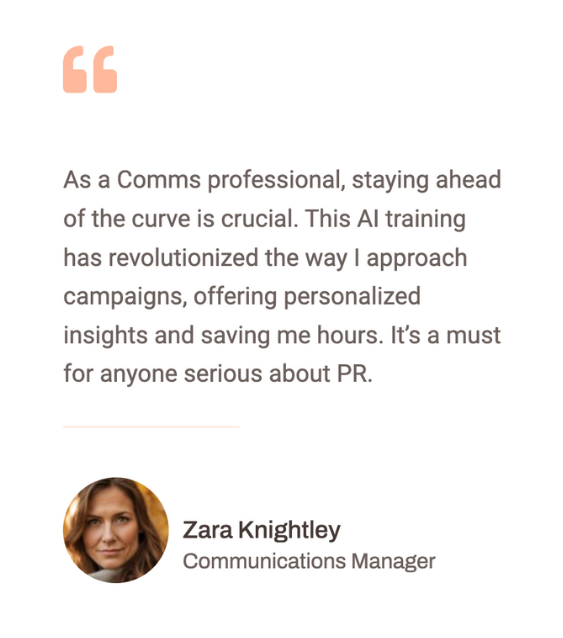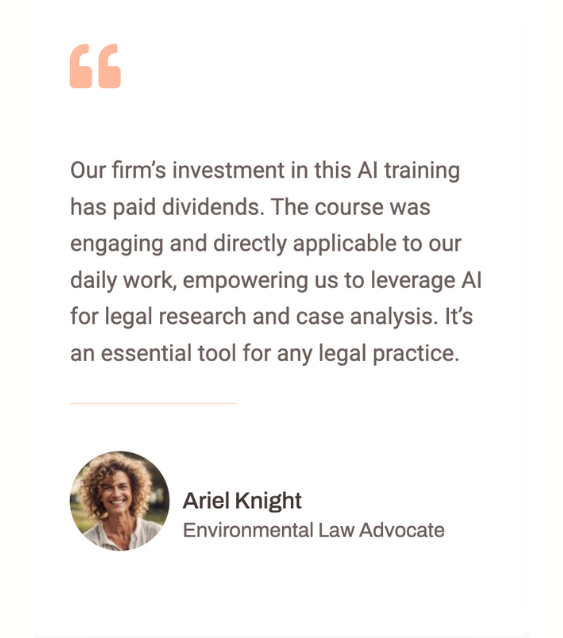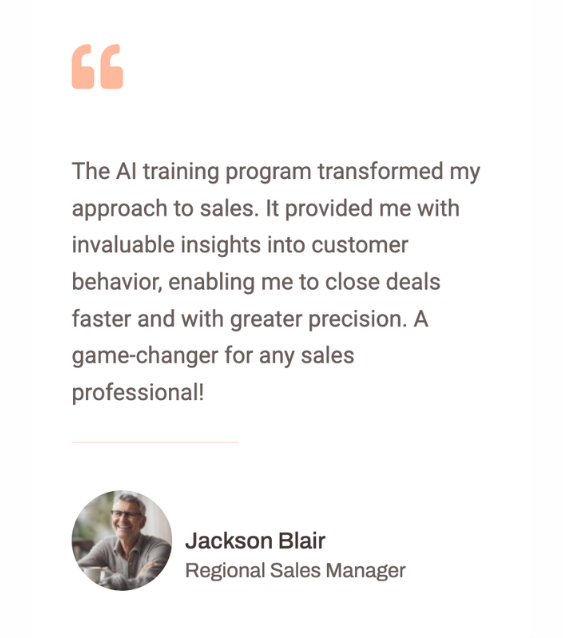AI-Powered Dropshipping Course: Build a Profitable Shopify Brand (Video Course)
Start dropshipping the right way in 2026. Build a real brand fast with AI, launch a clean Shopify store, run UGC-style ads, scale with a proven Facebook plan, speed up shipping via private sourcing, and track true profit without the spreadsheets.
Related Certification: Certification in Launching and Scaling AI-Driven Shopify Dropshipping Brands
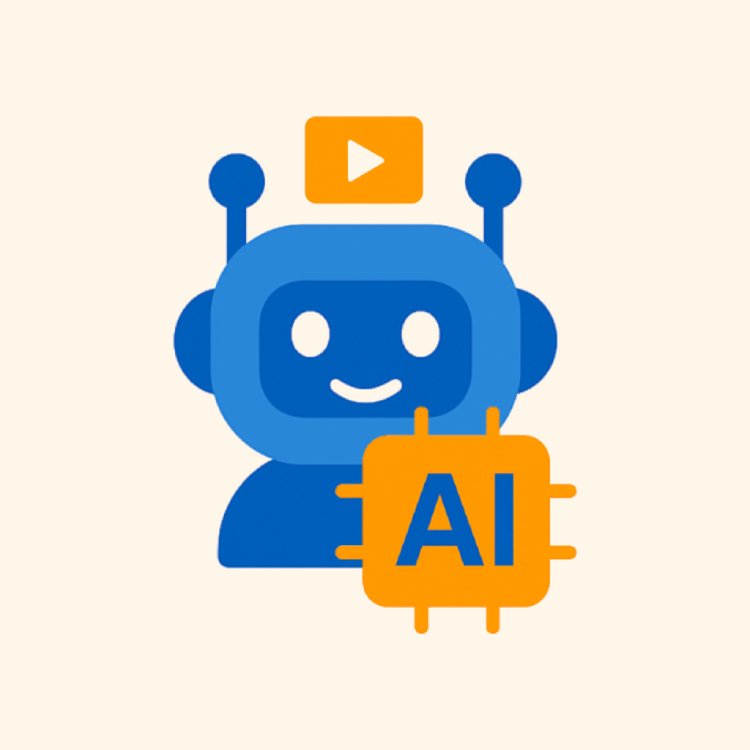
Also includes Access to All:
What You Will Learn
- Choose products with brand potential using the 3-part formula
- Build a conversion-ready Shopify store in minutes with AI
- Create UGC-first content and run Creative Testing → CBO → Champion CBO
- Control fulfillment, white-labeling, and quality checks for fast shipping
- Track true net profit, AOV, CAC, and break-even to scale profitably
Study Guide
Beginner's Guide To Start Dropshipping (Full Course)
You don't need more motivation. You need a map. This course is a map for building a real e-commerce brand using dropshipping as your launch vehicle. We'll cover the mindset shift from product flipper to brand builder, how to select products with long-term potential, how to deploy AI to build a conversion-ready store in minutes, and how to market with authentic content that actually sells. You'll learn how to structure Facebook campaigns that scale without guesswork, how to control your supply chain with private agents and white labeling, and how to track true profit so you're not flying blind. If you're starting from zero, this will give you the exact steps. If you've tried before and stalled, this will show you what you missed.
Promise:
By the end, you'll have a step-by-step system to launch, validate, and scale a brand-centric dropshipping business with speed, clarity, and control.
What You'll Learn (And Why It Matters)
The old playbook,find a "trending" gadget, slap it on a generic store, tolerate slow shipping, and pray ads work,no longer works. Customers are smarter, platforms are strict, and ad costs punish inefficiency. The new game rewards brands that feel human, deliver fast, and keep promises.
In this course, you'll learn to:
- Choose products with brand potential (not just temporary spikes).
- Use AI store builders to create a brand-ready storefront in minutes.
- Launch a UGC-first marketing engine so ads don't look like ads.
- Run Facebook campaigns with a clear testing and scaling framework (Creative Testing → CBO → Champion CBO).
- Control fulfillment with private agents and white labeling.
- Track true net profit, so scaling doesn't kill margins.
- Avoid beginner traps that waste time and money.
Key Concepts & Terminology (Start Here)
Dropshipping:
Selling products without holding inventory. When a customer orders, you purchase from a supplier that ships directly to the customer.
AI Branded Dropshipping:
Using AI tools to quickly build a conversion-optimized, branded store (layout, copy, visuals) that would normally take weeks.
White Labeling:
Adding your logo, packaging, and brand elements to an existing product so you control the look, feel, and pricing power.
User-Generated Content (UGC):
Authentic videos/photos/reviews that look like real people sharing real experiences. This is the modern ad format.
Creative Testing:
Low-budget ad testing to find winning video creatives before scaling.
Campaign Budget Optimization (CBO):
A Facebook setting that auto-distributes budget to top performers inside a campaign.
Ad Metrics You Must Know:
- CPM: Cost per 1000 impressions.
- CTR: Click-through rate.
- CPC: Cost per click.
- Cost Per Purchase: Ad spend divided by number of purchases.
The Core Strategic Shift: From Product Flipper To Brand Builder
The biggest mistake beginners make is chasing products instead of building an identity. A product is a commodity. A brand is a story people choose to buy into.
The outdated model:
- Source from generic marketplaces.
- Generic store, long shipping, low margins.
- High chargebacks, weak retention, no equity.
The modern model:
- Choose a niche and a clear customer avatar.
- Build a conversion-optimized brand using AI.
- Offer fast shipping via private agents.
- Control look and feel with white labeling.
Example:
- Product Flipper: Random kitchen gadget store with 12 unrelated items, no brand voice, inconsistent visuals, slow shipping, and "sale ends tonight" spam everywhere.
- Brand Builder: Single-product store for a premium posture corrector with a cohesive identity, strong educational content, 10-day delivery, and packaging that feels like Apple-level care.
Another example:
- Flipper: Seasonal pet Halloween costumes that spike for a week, then die.
- Brand: Pet anxiety relief brand selling calming beds, lick mats, training guides, and bundled care kits with year-round demand.
How To Think About Product Selection (Brand Potential Over Trends)
Winning isn't about finding a unicorn. It's about picking something that can become a brand and stacking small wins consistently.
Use this 3-part formula:
1) Emotional Element: Does it connect to identity, lifestyle, or passion?
2) Evergreen Demand: Can it sell year-round?
3) Brand Expansion Potential: Can you add related products logically?
Example (Emotional):
- Daily Gratitude Journal for new parents (identity, routine, community).
- Minimalist home office gear for remote workers who value aesthetics and productivity.
Example (Evergreen):
- Sleep optimization tools (masks, weighted blankets, sound machines).
- Mobility and recovery tools for fitness enthusiasts (foam rollers, massage balls).
Example (Expansion):
- Pregnancy pillow → baby crib sheets → postpartum recovery kit → baby carrier.
- Cold brew starter kit → premium beans → glassware → flavor syrups → subscriptions.
Case Study:
Portable washing machine vs. Daily Bible Journal. The washer solves a functional issue and can generate impressive revenue quickly, but the audience is narrow and seasonal patterns exist. The journal taps into faith, routine, identity, and has natural spin-offs: devotionals, verse cards, wall art, study guides. The journal brand can expand. It's a better long-term bet.
Customer Avatar: Sell To Someone, Not Everyone
Money follows focus. Define who you serve before you choose what to sell.
Build your avatar:
- Demographics: Age, location, income.
- Psychographics: Beliefs, values, frustrations, desires.
- Buying context: What problem do they want solved today?
Tip:
Write a one-paragraph "day in the life" of your buyer. Use their language in your product pages, ads, and emails.
Example:
- "Emily, 32, first-time mom, short on sleep, wants quick solutions she can trust. She values safety, soothing routines, and credible brands that look reliable."
- "Marcus, 27, remote designer, values minimal design, hates clutter, pays for tools that improve focus."
AI For Speed: Build A Branded Store In Minutes
Stop burning time on design when the market hasn't even seen your offer. Leverage AI to ship faster and test sooner.
Recommended stack:
- Platform: Shopify for reliability and ecosystem.
- AI Builder: Debutify or similar to generate layouts, copy blocks, and visuals based on high-performing patterns.
- Conversion Widgets: Trust badges, reviews, urgency elements, sticky add-to-cart, upsell bundles, FAQ, email popups.
Workflow (fast):
- Create Shopify account.
- Connect AI builder, choose niche and style (minimal, bold, playful).
- Import your product(s) and reviews.
- Enable conversion features (upsells, bundles, guarantees).
- Swap copy with customer-language headlines and benefit bullets.
Example:
- Pet calming brand: Soft earth tones, friendly serif fonts, lifestyle photos with pets + owners, "Vet-approved comfort" badge, video testimonial in top half of product page, bundle discount for multi-pet households.
- Sleep optimization brand: Dark mode theme, clean sans-serif font, calming imagery, social proof carousel, guarantee: "Sleep better in 30 nights or your money back."
Best practices:
- One primary CTA per page ("Add to Cart").
- Keep the header clean (logo + cart).
- Use the "Grunt Test": Can a caveman land on your site and grunt what you sell, how it helps, and how to buy?
Write Product Pages That Sell (Structure + Copy)
You're not selling a product; you're selling a better version of your customer's day.
Use this structure:
- Headline: Outcome-driven ("Wake Up Energized, Not Tired").
- Subheadline: Specific pain relief.
- Social Proof: Reviews or a short UGC clip.
- Benefits: Bullet the "so what" behind features.
- Features: Specs that support the promise.
- Guarantee + Shipping: Reduce risk.
- FAQ: Handle objections (size, returns, timeline, materials).
Example (Mobility Tool):
- Headline: "Unlock Stiff Hips In 5 Minutes A Day."
- Benefits: "Move freely, lift heavier, sit pain-free."
- Guarantee: "Try it for 30 days. No results? Full refund."
Example (Journaling):
- Headline: "Quiet The Noise. Start Your Day Grounded."
- Benefits: "Clear head, consistent routine, track growth."
- FAQ: "What if I miss a day?" → "Our 3-minute prompts make it easy to get back on track."
UGC-First Marketing: Organic Feel, Paid Amplification
If your ad looks like an ad, it gets ignored. If it looks like a friend's recommendation, it gets watched. That's the entire game.
UGC content types:
- Problem-to-solution demos.
- Storytime: "I tried X for 7 days…"
- Unboxing + first impressions.
- Before/after + routine walkthroughs.
- Comparison: "I used A vs. B,here's what actually worked."
Examples from industry:
- Gym-focused brand grew by sending gear to real lifters who filmed their workouts and progress. Community came first; ads came later.
- Beauty brand built trust by reposting customer routines and feedback straight from the audience.
Two more examples:
- Beard care brand seeded product to micro-creators documenting a 30-day growth challenge. Each week's update fed ads.
- Hydration brand used real athlete testimonials and "daily life" clips instead of polished commercials. Authenticity won.
How to source UGC fast:
- Friends/family with decent phones.
- UGC creators on freelance marketplaces (pay per video).
- Customer incentives: "Send a 30-60 sec video, get 30% off your next order."
- Creator seeding: Send product to 20 micro-creators; ask for 1 video each.
Storyboard template (works):
- Hook (3-5 seconds): State the pain or bold promise ("I couldn't sleep through the night until this…").
- Demo: Show the product in real life, fast cuts.
- Proof: Before/after, quick testimonial clip, or benefit overlay text.
- CTA: "Link in bio for the discount" or "Tap to try it."
Organic First, Paid To Scale
Post UGC organically on short-form platforms and your brand's profiles. Watch what gets saves, comments, and shares. Those are your ad assets. Paid ads amplify what's already resonating.
Example:
- Post five variations of a "3 ways to use your mobility tool" video; pick the top two based on saves + shares and run those as ads.
- Ask customers to duet or stitch your content; compile the best reactions and repurpose into a montage ad.
Tips:
- Use native platform captions and text overlays.
- Front-load the hook with pain or social proof.
- Keep cuts quick; dead air kills attention.
Paid Ads Blueprint: Creative Testing → CBO → Champion CBO
Ads aren't complicated when you stop guessing. Test creatively, scale methodically, and never stop feeding the machine new creatives.
Phase 1: Creative Testing (low budget)
- Create 5-10 short UGC-style videos.
- Launch a Sales campaign in Ads Manager (manual setup).
- Use broad, no-interest targeting in top e-commerce countries (US, UK, CA, AU, NZ). Age 21+. Automatic placements.
- Budget example: $10/day per ad set. One creative per ad set. Keep the creative as the only variable.
- Metrics to watch: Low CPC, healthy CTR (aim for 2.5%+), and Add to Carts/Purchases.
Phase 2: Scaling with CBO
- Move 1-3 winning creatives into a new CBO at a higher budget (e.g., $100/day).
- Keep targeting broad; let the algorithm find buyers.
- Spin up new CBOs for each new batch of winning creatives.
Phase 3: Champion CBO
- Consolidate the top performers from multiple CBOs into one "Champion" campaign.
- Allocate a larger budget (multiple hundreds to thousands per day).
- Keep original CBOs running; the Champion stacks scale on top.
Example:
- Mobility brand finds two winners: a pain-point demo and a morning routine walkthrough. Both go into CBOs. The Champion campaign combines those two plus a comparison ad featuring a popular competitor.
- Journal brand finds that "7-day challenge recap" beats "unboxing" by 3x ROAS. Scale challenge recap broadly and keep testing more challenge formats weekly.
Optimization tips:
- Refresh creatives weekly; fatigue is real.
- Kill clear losers early (high CPC, no ATCs after reasonable spend).
- Never scale a broken product page; fix on-site conversion first.
Analyze Like A Pro: From Metrics To Decisions
"Your store or your ads are not broken. You just haven't learned how to read the data yet." This is the skill that separates winners from dabblers.
Diagnose by funnel stage:
- Low CTR + high CPM: Hook sucks or audience mismatch. Fix the first 3 seconds and thumb-stopping visuals.
- High CTR + low ATC: Product page problem. Fix messaging, reviews, pricing, or page speed.
- ATC but no purchases: Checkout friction. Simplify checkout, add guarantees, improve trust signals.
Example fixes:
- Move social proof above the fold and add a 20-second UGC clip near the price.
- Clarify sizing with a simple chart and photo-on-body guide.
- Add Shop Pay/Apple Pay and surface your guarantee next to the Buy button.
Operational Excellence: Shipping, Fulfillment, White Labeling
Fast shipping and consistent quality aren't "nice to have." They're the foundation of a real brand.
Reliable fulfillment:
- Work with a private sourcing agent (e.g., a service like Team Drop) for faster processing and direct communication.
- Aim for 7-13 day delivery windows as your standard (earlier is better).
- Request pre-shipment verification photos to ensure accuracy.
White labeling and brand control:
- Custom packaging, logo, and inserts elevate the experience.
- You control pricing power and perception,no longer a commodity.
- Build loyalty and reduce copycat risk.
Example:
- Sleep brand adds a custom satin bag, care card, and a QR to a mini sleep routine video,unboxing becomes a shareable moment.
- Pet brand includes a "first 7-day calming plan" insert and a thank-you note signed by the founder persona.
Quality assurance SOP:
- Inspect first 20 orders personally via photos/videos.
- Document common defects and set pass/fail criteria with your agent.
- Maintain a simple defect log and update the supplier monthly.
Financial Mastery: Track True Profit (Not Just Revenue)
Revenue is vanity. Net profit is reality. You need to know what's left after every hidden cost.
Use a profit dashboard:
- Tools like True Profit integrate your store and ad accounts.
- Track COGS, shipping, transaction fees, and ad spend in real-time.
- See profit by order, product, and campaign.
Understand your math:
- AOV (Average Order Value): Raise with bundles, quantity breaks, and post-purchase upsells.
- CAC (Customer Acquisition Cost): What you pay to get a customer from ads.
- LTV (Lifetime Value): How much a customer spends over time (email flows, subscriptions, product line extensions).
- Break-even point: Know your break-even ROAS or CPA before scaling.
Example:
- AOV $55, COGS + shipping $22, fees $4 → gross margin $29. If your break-even CPA is $29, anything below is profit. Improve AOV to $65 with a bundle and you buy more room to scale.
- Journal brand adds a "3-pack family bundle" and a "guided audio upgrade" to lift AOV by 20% in a week.
Step-By-Step Launch Plan (From Zero To Live)
Phase 1: Foundation
1) Define your avatar and niche. Choose a brand name and simple message: "We help [who] get [result] without [pain]."
2) Create your Shopify account. Keep it simple.
Phase 2: Product Research
1) Use a tool like AutoDS to find demand-backed products.
2) Filter by engagement and saturation. Look for problem-solving items with evergreen appeal.
3) Shortlist 3-5 products and run a quick scoring against the 3-part formula.
Phase 3: Store Build With AI
1) Connect an AI builder (e.g., Debutify) and generate your store.
2) Import reviews and enable conversion features.
3) Write outcome-focused headlines and FAQs. Ensure your "Grunt Test" is passed.
Phase 4: Fulfillment Setup
1) Contact a private sourcing agent. Share your SKU list.
2) Confirm processing times, shipping estimates, and quality control steps.
3) Set up tracking notifications and clear shipping policy on your site.
Phase 5: UGC Creation
1) Script 5-10 short videos: pain hook, demo, proof, CTA.
2) Record on phones with natural light. Aim for authenticity, not polish.
3) Edit for speed: jump cuts, captions, 15-30 seconds.
Phase 6: Creative Testing Ads
1) Launch 5 ad sets with 5 different creatives.
2) Target broad in the top e-commerce countries, age 21+.
3) Let spend accumulate and kill obvious losers. Keep ads with strong CTR and early ATCs.
Phase 7: Scale With CBO
1) Move winners into a CBO at a higher budget.
2) Start a new testing batch while the first CBO runs.
3) Maintain a weekly cadence: test → promote winners → archive losers.
Phase 8: Champion CBO
1) Combine your greatest hits into one campaign.
2) Increase budget. Monitor profit daily via your profit tool.
3) Keep original CBOs running in parallel.
AOV Boosters And On-Site Levers
Upsell ideas:
- Bundles (Buy 2 Save 10%).
- Complementary add-ons (case, cleaning kit, carry pouch).
- Post-purchase one-click upsell (a consumable or digital guide).
Trust boosters:
- "30-Day No-Questions-Asked" guarantee.
- Clear shipping timeline and tracking portal.
- Real customer photos and honest reviews.
Example:
- Mobility brand: Bundle mobility tool + resistance band + digital warm-up guide.
- Journal brand: Bundle journal + pen set + "30-day prompts" PDF with audio companion.
From Dropship To White Label To Private Label
Start lean. As you see traction, invest in deeper control.
Stage 1: Classic Dropship
- Validate offer and messaging.
- Move quickly and iterate.
Stage 2: White Label
- Add logo, custom packaging, and inserts.
- Build perceived value and justify higher prices.
Stage 3: Private Label
- Minor product improvements and custom molds (when data justifies it).
- Protect margins and build defensibility.
Example:
- Sleep mask: Start with a proven SKU. After 500+ orders, move to branded packaging and a softer strap version. Later, add a contoured variant exclusive to your brand.
- Pet product: Start with a calming bed. After consistent sales, introduce custom stitching and an exclusive colorway customers can't find elsewhere.
Customer Experience That Prints Repeat Business
Retention is where profit hides. Make the experience shareable and memorable.
Experience upgrades:
- Branded thank-you card with a personal note and QR to a welcome video.
- "Day 1" and "Day 7" email sequences with tips and a check-in.
- Loyalty points and VIP discounts for repeat buys.
Example:
- Mobility brand sends a 7-day email program with daily 5-minute routines. Customers feel guided, not sold.
- Journal brand includes a seasonal challenge calendar and a monthly community giveaway for user-submitted spreads.
Compliance, Platform Policies, And Claims
Don't get banned because you made a bold claim the platform hates.
General guardrails:
- Avoid exaggerated promises ("cure," "guaranteed results").
- No sensitive personal attributes in targeting or ad copy.
- Use disclaimers where appropriate (results vary, not medical advice).
- Respect trademarks and intellectual property.
Example:
- Say: "Support your nightly wind-down routine." Not: "Cure insomnia overnight."
- Say: "Helps reduce feelings of jitters." Not: "Eliminates anxiety permanently."
True Profit Tracking: Your Daily Control Center
Decisions without numbers are guesses. Guesses cost money.
Set up a dashboard (e.g., True Profit):
- Connect store, payment processors, and ad platforms.
- Enter COGS and shipping per SKU.
- Watch daily net profit, not just ROAS.
Use it to:
- Identify loss-making SKUs and pause them.
- See which creatives drive actual profit, not just clicks.
- Decide when to scale budgets and when to hold.
Example:
- A creative with "okay" ROAS but a higher AOV due to bundling can outperform a "great ROAS" creative with low cart values.
- A top-of-funnel video generates fewer direct sales but feeds retargeting profits,your dashboard reveals the big picture.
Authoritative quotes to remember:
"Waiting around for the perfect moment is really just fear disguised as patience. You don't need perfection. What you really need is progression."
"If your content looks like a commercial, customers will scroll faster than you can blink. Organic facing content is now the driver of growth, and paid ads are just there to amplify what's already working."
"If you do not know who you're selling to, you're guessing. And guessing costs money."
"Your store or your ads are not broken. You just haven't learned how to read the data yet."
Systematic Testing Removes Risk
Follow the framework. Respect the data. Avoid drama.
Checklist:
- Creative Testing: 5-10 videos, broad targeting, kill losers fast.
- Scale with CBO: Promote winners, keep testing in parallel.
- Champion CBO: Consolidate and scale hard.
- Weekly creative refresh: 3-5 new concepts.
- Daily profit check: Scale only if net profit is healthy.
Example cadence:
- Monday: New creative batch live.
- Wednesday: Prune losers, move early winners to CBO.
- Friday: Add best-of-week to Champion CBO and review profit dashboard.
Common Mistakes (And The Fixes)
1) Shiny Object Syndrome
- Problem: Constantly hopping strategies or products.
- Fix: Commit to one system for at least a month. Mastery beats novelty.
2) Perfection Paralysis
- Problem: Waiting to launch until it's perfect.
- Fix: Use the 51/49 rule. If it's good enough to test, publish and learn.
3) Unicorn Product Obsession
- Problem: Hunting for "the one" product forever.
- Fix: Stack wins from multiple good offers. Iterate based on data.
4) Ignoring Your Avatar
- Problem: Vague messaging to everyone.
- Fix: Do the avatar worksheet. Speak directly to a single person's pain, identity, and desired outcome.
5) Cluttered Store
- Problem: Visual noise and too many CTAs.
- Fix: Simplify. One clear message. One clear action. Pass the Grunt Test.
Two Full Mini Case Walkthroughs
Case A: Mobility Brand
- Avatar: 25-40 active professionals with desk jobs and gym habits.
- Product: Hip mobility tool + resistance band bundle.
- UGC: "Desk worker to deadlifter" 7-day challenge, morning routine, comparison vs. lacrosse ball.
- Ads: Creative testing finds the routine video wins. CBO consolidates routine + comparison. Champion CBO adds a coach testimonial.
- Ops: Private agent reduces delivery to ~10 days. Add logo to packaging and a QR to a 5-minute warm-up video.
- Profit: AOV boosted with bundles and a digital warm-up guide. Dashboard shows which creative leads to most profitable carts.
Case B: Journal Brand
- Avatar: Faith-driven professionals seeking daily structure and reflection.
- Product: Daily devotional journal with premium paper and guided prompts.
- UGC: "7 days with my journal" recap, morning routine, family journaling night.
- Ads: Challenge recap video outperforms unboxings. Scale via CBO. Champion includes top recap + duet reactions.
- Ops: White-labeled packaging, custom pen set, thank-you card with scripture insert.
- Profit: AOV lifts via "Family Pack" bundle + audio companion upsell. Retention improves with a "30-day challenge" email sequence.
Implications & Applications (Who This Helps)
Entrepreneurs:
Launch with a lean system, reduce risk, and build real brand equity instead of chasing spikes.
Educators:
Teach the new playbook: AI-enabled setup, UGC-first marketing, data-led scaling, and true profit tracking.
Marketers:
Adopt the Creative Testing → CBO → Champion CBO framework and make content your growth engine.
Students:
Study how technology, authenticity, and ops discipline turn a store into an enduring brand.
Action Items & Recommendations (Do These Next)
1) Clarify your brand strategy first:
Avatar, mission, and niche in writing before you pick products.
2) Select a product using the 3-part formula:
Emotional connection, evergreen demand, and expansion runway.
3) Use an AI store builder:
Stand up a polished, conversion-ready store quickly.
4) Secure reliable fulfillment:
Vet a private agent, confirm shipping windows between a week and two, and set quality checks.
5) Implement true profit tracking:
Connect a profit dashboard on day one.
6) Execute the 3-phase ad strategy:
Creative test → CBO scale → Champion CBO. Broad targeting, simple structure.
7) Commit to one strategy:
Give it a month of disciplined execution before you tweak the overall system.
Practice: Build Your Skills
Multiple choice:
1) What defines a successful modern dropshipping business?
a) Cheapest supplier. b) Strong, recognizable brand. c) Largest product catalog. d) Only organic marketing.
2) In creative testing, what targeting is recommended?
a) 10 stacked interests. b) Only past visitors. c) Broad in top e-comm countries. d) Lookalikes from day one.
3) Purpose of a Champion CBO?
a) Test brand-new creatives. b) Scale top performers with a larger budget. c) Run clearance ads. d) Enter a new country.
Short answer:
1) List the three criteria for long-term product potential.
2) Why does UGC outperform polished ads?
3) Define white labeling and list two advantages.
4) Explain the Grunt Test and its conversion impact.
Discussion:
1) You find a product with high engagement but high saturation. Risks, rewards, and how you'd differentiate?
2) High CTR but zero Add to Carts,what's broken on-page, and how do you fix it?
3) "Learning vs. earning": why structured guidance can be cheaper than going solo.
Additional Resources (Keep Going)
Further reading:
- Shopify's official blog for e-comm best practices.
- Ad platform blogs for current ad tips.
Tools to explore:
- AI store builders with conversion widgets.
- Product research tools with engagement and saturation data.
- Profit dashboards that integrate with your store and ads.
- Private sourcing and fulfillment services with agent support.
Related skills:
- SEO for product pages and collections.
- Email automations: welcome, cart recovery, post-purchase, win-back.
- CRM and loyalty programs to increase LTV.
Advanced Tips: Building Moats Around Your Brand
Brand story flywheel:
- Founder narrative (even if it's a persona): why you built this, what you believe, what you refuse to compromise.
- Community rituals: challenges, monthly themes, user spotlight.
- Owned media: weekly newsletter with tutorials and customer highlights.
Offer architecture:
- Entry product (impulse-friendly).
- Core product (main profit driver).
- Continuity product (subscription/refill/digital companion).
- Premium bundle (anchoring price point).
Example:
- Hydration brand: Entry,single pack. Core,variety bundle. Continuity,monthly refill subscription. Premium,XL bundle + insulated bottle + travel kit.
- Journal brand: Entry,single journal. Core,family bundle. Continuity,quarterly subscription with seasonal prompts. Premium,journal + pen set + audio companion + private community access.
Troubleshooting Matrix (Quick Fixes)
Problem: High CPMs, low CTR
- Fix: New hooks, contrasting thumbnails, call out pain in first 3 seconds, use lo-fi creator shots.
Problem: High CTR, low ATC
- Fix: Tighten hero section, add quick demo, price clarity, guarantee near "Add to Cart," improve page speed.
Problem: ATCs but low purchases
- Fix: Simplify checkout, add express pay, trust badges, remove surprise fees, cart recovery email + SMS.
Problem: Orders but refunds/complaints
- Fix: Improve QA with your agent, set clear expectations on timeline, upgrade packaging, add how-to content.
Mindset For Momentum
Action beats perfection.
Launch imperfectly. Learn fast. Adjust weekly. The people who win treat this like a craft: test, review, refine. You're building a brand that grows more valuable with every rep you put in.
Final Summary: What Matters Most
You're not here to flip products. You're here to build an asset. The path is straightforward if you do the work. Choose products with emotional pull, evergreen demand, and a runway for expansion. Use AI to ship a clean, conversion-ready store in minutes,not months. Lead with UGC that feels real. Test creatives with small budgets, scale winners with CBOs, and supercharge with a Champion campaign. Control your fulfillment with a private agent and upgrade to white labeling as you grow. Check profit daily so scaling never outpaces your margins.
Your competitive edge is discipline. Keep the system simple. Keep improving the experience. Keep listening to the data. If you execute this consistently, you won't just make sales,you'll build a brand people trust and keep coming back to.
Next step:
Pick your niche and avatar today. Build the store tomorrow. Film five UGC videos right after. Launch by the end of the week. Progress over perfection,always.
Frequently Asked Questions
This FAQ distills the most useful questions and answers about modern dropshipping so you can cut wasted motion, make clear decisions, and move fast with confidence. It's built to cover the basics, clarify common misconceptions, and give you practical steps for setup, marketing, scaling, and finance. Each answer is written for business professionals who value clear thinking, simple systems, and measurable outcomes.
I. Fundamentals of Modern Dropshipping
What is the fundamental shift in modern dropshipping?
Core idea:
The old approach of flipping random trending products with slow shipping is fading. The shift is from "product flipper" to "brand builder." Customers expect fast delivery, solid quality, and a trustworthy brand experience.
What changes:
- Build a brand from day one, not a catalog of unrelated gadgets.
- Use AI to speed up store setup and conversion design without bloated app stacks.
- Choose products with emotional pull, evergreen demand, and expansion potential.
- Lead with UGC-style content over polished, sterile ads.
- Gain supply chain control through private suppliers and white labeling.
Result:
You stop chasing quick spikes and start building equity: better margins, repeat buyers, and a compounding asset.
Why is the old model of dropshipping considered "dead"?
Customer savvy + platform pressure:
People spot generic stores, slow shipping, and copied ads in seconds. Ad platforms and payment processors penalize poor experiences with bans, throttling, and holds.
Profit squeeze:
Rising ad costs crush low-margin flips. If your product is a commodity, the cheapest seller wins,and that's rarely you.
No compounding:
Trend-chasing stacks revenue, not loyalty. You lose brand equity, email lists, and LTV opportunities.
Better path:
Own the relationship. Improve product quality, shipping speed, and branding. That's what protects margins and lowers acquisition costs over time.
What does it mean to be a "brand builder" instead of a "product flipper"?
Brand builder:
- Selects products that fit a cohesive identity and audience.
- Prioritizes quality, trust, and experience.
- Owns customer relationships and expands product lines logically.
- Controls margins and story.
Product flipper:
- Chases whatever trends pop up.
- Competes on price with low loyalty.
- Gets wiped out by saturation and platform bans.
Practical example:
A pregnancy pillow store later adds baby carriers and bassinets. That creates bundles, repeat purchases, and a story customers want to be part of.
What is "AI Branded Dropshipping"?
Definition:
Using AI to build a professional, conversion-optimized store in minutes, not months. These tools leverage patterns from high-performing brands to generate layouts, copy, and conversion features.
Benefits:
- Faster launch without designers or code.
- Built-in upsells, reviews, timers, and trust assets.
- Consistent brand identity and clean UX.
Outcome:
More time on product-market fit, content, and supply chain,where profit is made,rather than tinkering with theme settings.
II. Product Selection and Sourcing
How should I choose a product today?
Use a three-part filter:
1) Emotional element: Does it connect beyond utility? A devotional journal beats a portable washer on affinity.
2) Evergreen demand: Can it sell year-round?
3) Brand expansion: Can you add complementary products under the same umbrella?
Practical tip:
Look for products that create identity and community. If you can't imagine at least three logical add-ons, reconsider the pick.
Example:
A dog anxiety vest → add calming chews, training guides, and travel crates.
How can product research tools help find a winning product?
Data beats guessing:
Use tools (e.g., AutoDS) to evaluate engagement, saturation, and targeting suggestions.
Key indicators:
- Engagement score: Strong social proof and interest (aim high).
- Saturation score: Enough sellers to prove demand, but not jam-packed.
- Targeting info: Demographics and interests that shorten your testing curve.
Action:
Shortlist 5-10 products that meet the criteria, then validate with small-budget ad tests before committing.
Why is fulfillment critical, and what should I look for in a supplier?
Shipping speed = brand health:
Slow delivery kills repeat orders and invites chargebacks.
What to assess:
- Processing time: How fast orders are packed.
- Total delivery window: Target a tight timeline; avoid long lags.
- Reliability: Direct communication, verification photos, clear SLAs.
Tip:
Work with private agents who can troubleshoot issues quickly and maintain consistent quality as volume grows.
What is white labeling and why does it matter for scaling?
Definition:
Applying your logo, packaging, and unboxing experience to an existing product.
Why it works:
- You become a brand, not a vendor.
- Higher perceived value supports better margins.
- Defensible positioning; competitors can't easily copy your experience.
Example:
A skincare tool with custom packaging, inserts, and a QR code to a care guide beats a plain-box version every time.
III. Marketing and Advertising
What is the "UGC-first" advertising model?
UGC principle:
People trust people. Creator-style content outperforms glossy ads because it feels authentic and relatable.
How to use it:
- Show real use cases, before/afters, and fast demos.
- Use voiceover hooks, testimonial cuts, and quick transitions.
- Seed products to micro-creators and customers for volume.
Proof:
Fitness and beauty brands grew by featuring real customers in action, not studio shoots.
How should I target my Facebook ads?
Go broad:
Use no-interest targeting and let the algorithm find buyers. It models behaviors and signals you can't manually stack.
Why this works:
Modern ad engines are built to optimize toward purchase events with huge data sets.
Exception:
If your product is ultra-niche, test 1-2 broad interests for signal, then return to broad once conversions start.
What is "creative testing" and how do I set it up?
Goal:
Find winners cheaply before scaling.
Setup:
- Create a Sales campaign with one ad set budgeted small (e.g., ~$10/day).
- Target top e-commerce countries with broad settings and automatic placements.
- Duplicate the ad set to create five total; place a different video in each. Keep everything else identical.
What to watch:
Cost per link click (aim low), CTR (aim high), add-to-carts, and purchases. The creative with the strongest signals moves to scaling.
What are the key metrics to watch in my ad campaigns?
Core metrics:
- CPM: Cost per thousand impressions (market competitiveness).
- CTR: Click-through rate (creative relevance; aim for strong engagement).
- CPC/CPLC: Cost per click/link click (traffic efficiency).
- Cost per purchase: Compare against your break-even to confirm profit.
Interpretation:
Good CTR + bad conversion = landing page or offer problem. Bad CTR = weak creative or hook. High CPM may signal poor audience fit or weak creative resonance.
How do I calculate my break-even point?
Formula:
Selling Price - (Cost of Goods + Shipping + Transaction Fees) = Break-Even Cost Per Purchase.
Example:
If you sell at $30 and total costs are $10, your break-even is $20. If your cost per purchase is under $20, you're profitable on that sale.
Tip:
Factor in refund rate and creator fees to get a more realistic target.
What is a "CBO" campaign and how do I use it to scale?
Definition:
Campaign Budget Optimization lets the platform allocate budget across ad sets dynamically.
Process:
- Put winning creatives from tests into a new CBO with a larger budget.
- Run multiple CBOs to find new winners continuously.
- Build a "Champion CBO" with only top performers and push budget there.
Principle:
Scale what the data proves. Keep original CBOs running; the champion sits on top for maximum volume.
IV. Store Management and Common Mistakes
How can I quickly build a professional-looking store?
Use an AI-powered theme stack:
Tools like Debutify can spin up a branded layout fast with built-in conversion assets: upsells, trust badges, reviews, timers, sticky add to cart, and guarantees.
Why it matters:
You save on third-party apps, reduce tech debt, and focus on product and content instead of tinkering with design minutiae.
Outcome:
Cleaner UX, faster pages, and higher conversion rates.
How do I accurately track my store's profitability?
Revenue is vanity. Profit is sanity:
Shopify shows sales; ad managers show spend. Neither includes cost of goods, shipping, transaction fees, refunds, or creator fees.
Solution:
Use a unified profit tool (e.g., True Profit) that integrates with your store and ad accounts to show real-time net profit and P&L by product and campaign.
Why this works:
Clear profit data = confident scaling and faster cuts on losing campaigns.
What are the most common mistakes beginners make?
Top errors:
- Shiny object syndrome: Constantly switching strategies.
- Perfectionism: Delaying launch for "perfect."
- Weak customer insight: Vague audience and messaging.
- Poor hooks: Ads that don't win the first three seconds.
- Ignoring data: Not diagnosing the funnel stage that's broken.
Fix:
Commit to one playbook for a focused period, test fast, and let metrics guide changes.
How much money do I really need to start dropshipping?
Budget ranges:
- With mentorship: Leaner testing budget can work (~$500-$1,000) because guidance reduces waste.
- Solo learning: Expect a larger budget (~$2,500-$5,000) to pay tuition to the market through tests and mistakes.
Note:
Allocate for product samples, creative production, ad tests, and essential apps or tools.
How much time does modern dropshipping require?
With AI and automation:
About 10-20 hours per week once systems are in place.
Without leverage:
Expect 20-40 hours per week covering product research, content, ads, and customer service.
Reality:
Front-load the setup; then your weekly rhythm is creative production, ad management, and operations reviews.
What is the "grunt test" for a website?
Simple clarity test:
In seconds, could a caveman know: 1) What you sell, 2) How it helps, 3) What to do next?
How to pass:
- Clear headline and subhead above the fold.
- Benefit-driven bullets and a visible CTA.
- Clean imagery that shows the product in use.
Outcome:
Less friction = more conversions.
V. Additional FAQs: Strategy, Operations, and Scaling
Is dropshipping still viable, or is it saturated?
Short answer:
It's viable if you build a brand. Generic flipping is crowded; brand-building with quality, speed, and UGC is far less competitive.
Focus areas:
- Niche positioning and product-market fit.
- Fast fulfillment via private suppliers.
- Creative and offer innovation (bundles, guarantees).
Example:
A pet care brand with calming products, training content, and fast shipping will outlast a generic pet gadget store.
Which ad platform should I start with besides Facebook?
Pick based on product and content:
- TikTok: Strong for impulse-friendly products and viral UGC.
- Google Shopping/Performance Max: Great for intent-driven products customers are already searching for.
- Pinterest: Visual niches (home, beauty, DIY).
Play:
Start with one primary channel to get signal, then add a complementary channel to stabilize acquisition.
How do I get UGC if I'm just starting with no customers?
Methods:
- Hire UGC creators via marketplaces or outreach; send a simple shot list and benefit angles.
- Product seeding: Offer free product plus small fee or affiliate terms.
- Friends/family demos: Authentic usage clips with clear hooks.
Tip:
Ask for raw files and whitelisting rights so you can edit and run ads under creator handles.
How should I price my products and set margins?
Baseline:
Target a healthy gross margin after COGS and shipping. Consider transaction fees, creator costs, and refunds.
Levers:
- Bundle offers and quantity breaks to lift AOV.
- Tiered pricing (basic/pro/premium).
- Subscription for replenishable goods.
Rule of thumb:
If your break-even CPA is too tight, raise price via added value (bonuses, better packaging, warranties) instead of discounting.
Certification
About the Certification
Get certified in AI-Powered Dropshipping for Shopify. Show you can launch a real brand fast, use AI for product picks, build a clean store, run UGC ads, scale with Facebook, speed shipping via private sourcing, and track true profit.
Official Certification
Upon successful completion of the "Certification in Launching and Scaling AI-Driven Shopify Dropshipping Brands", you will receive a verifiable digital certificate. This certificate demonstrates your expertise in the subject matter covered in this course.
Benefits of Certification
- Enhance your professional credibility and stand out in the job market.
- Validate your skills and knowledge in cutting-edge AI technologies.
- Unlock new career opportunities in the rapidly growing AI field.
- Share your achievement on your resume, LinkedIn, and other professional platforms.
How to complete your certification successfully?
To earn your certification, you’ll need to complete all video lessons, study the guide carefully, and review the FAQ. After that, you’ll be prepared to pass the certification requirements.
Join 20,000+ Professionals, Using AI to transform their Careers
Join professionals who didn’t just adapt, they thrived. You can too, with AI training designed for your job.

